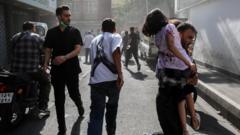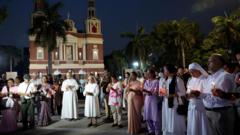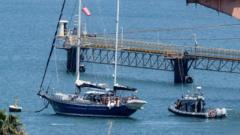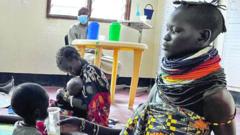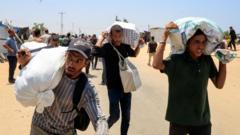Relief efforts in Myanmar are hampered by military obstacles, leaving many unassisted after the national disaster that has claimed over 3,500 lives.
**Myanmar's Earthquake Crisis: International Aid Struggles Amid Military Control**

**Myanmar's Earthquake Crisis: International Aid Struggles Amid Military Control**
Aid efforts hindered by military restrictions as Myanmar grapples with the aftermath of a devastating earthquake.
In the aftermath of the devastating earthquake that struck Myanmar last month, international aid efforts have quickly been drawn into a complicated web of military restrictions and bureaucratic delays. On March 28, a powerful tremor rocked the nation, toppling buildings, bridges, and historical temples, leaving a country already ravaged by civil conflict in further turmoil. Tragically, the official death toll has exceeded 3,500, with many still unaccounted for due to compromised communication lines and infrastructure.
Recent efforts by volunteers, including a group from France who previously aided survivors in Turkey, aimed to bring swift assistance. However, their arrival in Myanmar was marred by over 24 hours of hold-up at immigration in Yangon. Despite the military government's unexpected declaration for international aid and a cease-fire declaration amid territorial conflicts, aid groups have reported that relief is not reaching those in dire need effectively or efficiently.
The junta’s management of the crisis has led to accusations of exploiting humanitarian needs as a political maneuver while continuing its military actions against opposition groups. Observers note an atmosphere of fear and caution surrounding the deployment of aid workers, as there have been reports of military airstrikes and incidents of armed forces targeting relief providers.
Volunteers and humanitarian organizations are expressing growing frustration over the operational challenges they face. One volunteer with the French nonprofit L’Espoir du peuple A.R.S.I highlighted the untenable conditions on the ground, stressing that, despite international intentions, many lives remain at severe risk.
As the rescue phase concluded prematurely with no survivors discovered, the urgency for organized, unrestricted aid continues to rise. The fate of millions affected by the disaster hangs in the balance as the country remains embroiled in a state of distress, characterized by both the earthquake’s destruction and the deeper scars of civil strife. The struggle for effective relief under the watchful eye of a military government still stirs hope for a quicker restoration of the afflicted communities.
Recent efforts by volunteers, including a group from France who previously aided survivors in Turkey, aimed to bring swift assistance. However, their arrival in Myanmar was marred by over 24 hours of hold-up at immigration in Yangon. Despite the military government's unexpected declaration for international aid and a cease-fire declaration amid territorial conflicts, aid groups have reported that relief is not reaching those in dire need effectively or efficiently.
The junta’s management of the crisis has led to accusations of exploiting humanitarian needs as a political maneuver while continuing its military actions against opposition groups. Observers note an atmosphere of fear and caution surrounding the deployment of aid workers, as there have been reports of military airstrikes and incidents of armed forces targeting relief providers.
Volunteers and humanitarian organizations are expressing growing frustration over the operational challenges they face. One volunteer with the French nonprofit L’Espoir du peuple A.R.S.I highlighted the untenable conditions on the ground, stressing that, despite international intentions, many lives remain at severe risk.
As the rescue phase concluded prematurely with no survivors discovered, the urgency for organized, unrestricted aid continues to rise. The fate of millions affected by the disaster hangs in the balance as the country remains embroiled in a state of distress, characterized by both the earthquake’s destruction and the deeper scars of civil strife. The struggle for effective relief under the watchful eye of a military government still stirs hope for a quicker restoration of the afflicted communities.

